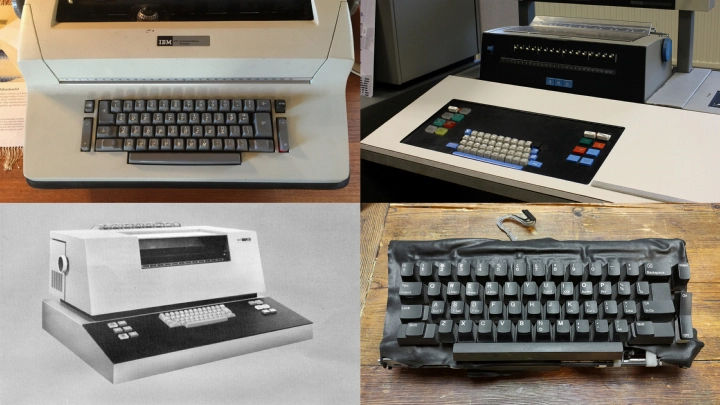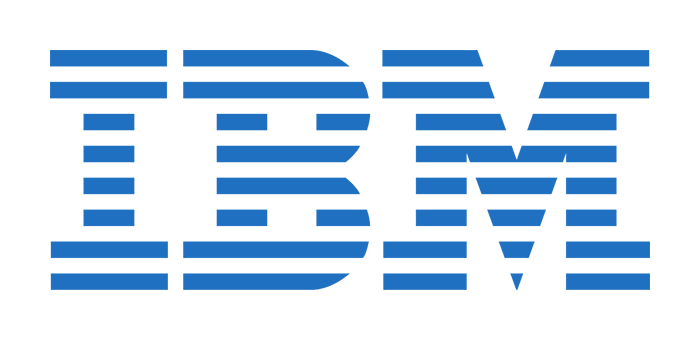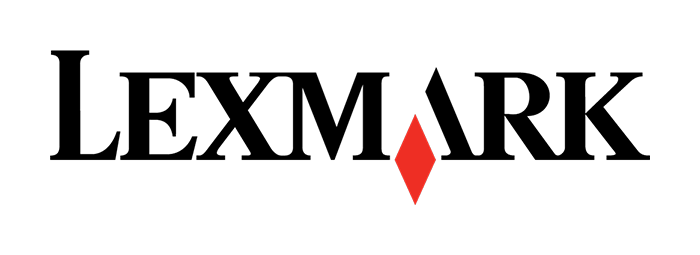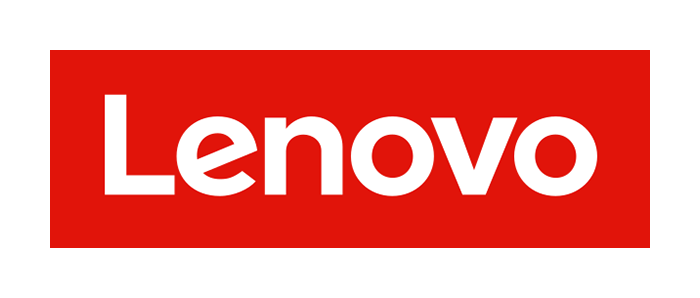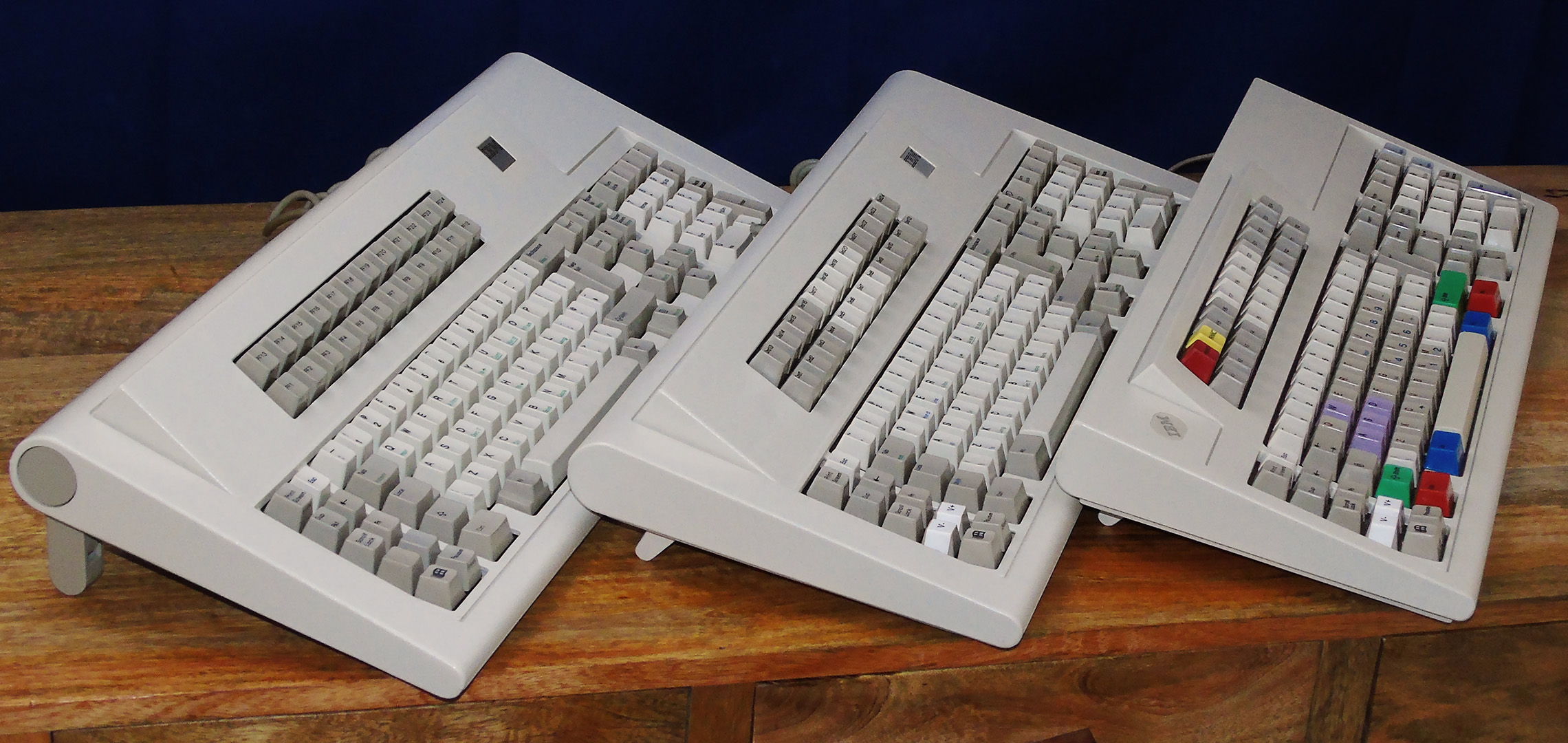Contents
Welcome: before you begin...
Welcome and thanks for stopping by! :) This website is my passion project to document, research and write about all IBM and family keyboards - famous or not - and I hope you can learn something or simply see and appreciate the sheer keyboard diversity from the company that played a huge role in ushering in our modern computing age. Before you begin, I want to point out some things that may improve your experience viewing this website.
Light mode
This website supports light mode viewing for those who prefer websites with a white background instead of grey or make things more suitable for greyscale printing. To enable/disable this feature, you can use the "Enable [light/dark] mode" option in the top navigation bar's  (settings) menu.
(settings) menu.
Note
Enabling "light mode" requires this website to create a cookie on your computer to save this preference for the next time you visit. It contains no other information. You can delete this cookie at any time by re-enabling "dark mode".
Navigating via image
This website by its very nature is very heavy on text and images. So as a potential method of navigating quickly (especially if you wish to find something when you don't know what something is called but may know what it looks like), you can navigate via image if desired. When available, you can open up image navigation by pressing the blue button with an image icon and then clicking any image of interest to automatically scroll to it on the current page. Most large pages (including this one!) that have a lot of text and images should have this option available.
Keyboard Dictionary
This website is also very technical, so don't fret if you find some terminology confusing regardless if you're new to IBM and family keyboards or experienced. The ASK Keyboard Dictionary is maintained and provided as a tool to find out what a lot of these terms mean.
The IBM keyboard families
As you may have gathered already, this website is dedicated to IBM keyboards. IBM keyboards are highly regarded by many people in the keyboard hobby, whether it's 'vintage' folk continuing to restore and use these behemoths of the last century or 'modern' folk who appreciate where the devices they're passionate about descended from. But, would it surprise you to hear that there's in fact a lot more than meets the eye with these keyboards? Not unlike how those in the 'modern' custom keyboard hobby are continuing to experiment with new materials, switch lubrication or switch component combinations, IBM keyboards contain a lot of nuances visually and under the surface. This website celebrates that diversity!
The keyboards this website covers can generally be summarised into seven distinct categories that constitute the main generations of IBM keyboards I recognise.
IBM Card Punch keyboards
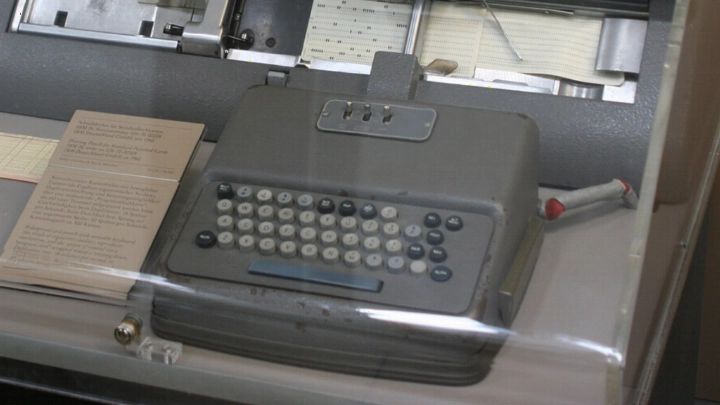
IBM's first unified generation of keyboards we can recognise as such today is considered to be the keyboard assemblies IBM used with their electromechanical keypunch systems, starting with the IBMs 024 Card Punch, 026 Printing Card Punch and 056 Card Verifier systems introduced in 1949. Keypunch machines were used for transcribing data or program code onto hard paper cards by punching precise holes with an operator's input, which can later be reinterpreted by another machine to load data or code. Before the heyday of the IBMs 024, 026 and 056, keypunching could be a labour-intensive hand-operated job and the electrical keypunches that did exist used tightly integrated keyboards. IBMs 024, 026 and 056 were special in that they were the first IBM keypunches with keyboards that were electrically separable as distinctive input devices in their own right. IBM began a practice of using such keypunch keyboard assemblies for non-keypunch-related systems like the ones in the following generation or the IBMs 2250 and 2260 keyboards, setting the stage for many recognisable keyboard designs and kickstarting IBM's keyboard pedigree.
IBM typewriter printer-keyboards
By 1958, IBM had started introducing terminal computers that used specialised input/output devices based on typewriter technology called a "printer-keyboard". As these were the days before CRT screens were popular, these devices used a typewriter-based printing element embedded in the keyboard itself to print output, hence their name. The printer-keyboard developed quickly after 1961 when IBM launched its famous Selectric line of typewriters known for using a whiffletree-style mechanical digital-to-analogue converter to translate a pressed key into a typed character from its "golfball" like typing element. IBM quickly began using the Selectric keyboard, Selectric typing element or both together for discrete keyboards for its period consoles and terminals, forming the bulk of the second generation of IBM keyboards. IBM also mixed in using Card Punch keyboard assemblies, resulting in various types of printer-keyboard varied on the mating of keyboard assembly to typing element. The IBMs 1052 I/O Printer-Keyboard, 1130 Computing System Console Keyboard and 2740/2741 Communications Terminal are the most well-known printer-keyboards.
IBM Elastic Diaphragm encoded keyboards
Slotting in between two larger IBM keyboard families, the seldom discussed brief third generation of IBM keyboards consisted of those using IBM Elastic Diaphragm keyswitches. The elastic diaphragm switch was seemingly introduced in 1969 to replace both Card Punch and typewriter-based keyboards by eliminating the need for their complex key-stroke sensing systems. They were technically IBM's first family of keyboards that used a named switch design, which in its most common form takes an IBM Selectric keyboard element and attaches a form of membrane sensor to the typebars. As such, they were essentially an intermediate between IBM's practice of reusing said Card Punch and typewriter products to serve as keyboards for systems unrelated to both keypunching and typewriting and self-contained switches as we know them today. The IBM 2772 Multi-Purpose Control Unit Keyboard, 5404/5406 System/3 Operator Keyboard Console and 5496 Data Recorder Keyboard are perhaps the three most common keyboards to use these switches. As you can see by their appearance, IBM Elastic Diaphragm keyboards are distinctly styled and generally take on a wedge shape.
IBM Model B keyboards
IBM Keyboard B (colloquially known as the Model B or beam spring keyboard) was IBM's fourth generation of keyboards that dominated the 1970s. Model Bs were IBM's first family of keyboards that used keyswitches as you would expect today - the revered beam spring capacitive clicky switch. They completely displaced IBM's use of three separate keyboard families from the 1960s or earlier and IBM's short-lived use of keyboards with Micro Switch SW (hall effect) keyswitches. IBM's keyboards were for the only time in history more or less unified under one umbrella with Model Bs employed with data entry stations, portable computers, terminal computers, operator consoles and word processing stations. Model Bs are known for being considerably large, robust and heavy, and many of them have solenoids to make them even louder and some even have compartments to store problem-solving literature for their host system. Today, they are considered by many to be the typist's 'holy grail' keyboard but they're extremely expensive, potentially cumbersome and acquiring one most likely results in the wasteful loss of a historically significant IBM terminal.
IBM Model F keyboards

IBM Keyboard F (or Model F as per their printed marketing designation) constitutes IBM's fifth generation of keyboards. They were designed to improve ergonomics, resistance to contamination with dust, and reduce the part count over the previous Model B family whilst also reducing cost. They exclusively featured IBM's famous capacitive buckling spring clicky keyswitches, had well-armoured construction and spawned a diverse number of variants for various IBM personal computers, portable computers, terminals and electronic typewriters sold in the first half of the 1980s. The most well-known Model F, the IBM Personal Computer Keyboard, played a huge role in the success of the original IBM PC and in a way they're a part of the reason x86-based PCs are still dominant today. Its terminal siblings are also well sought after and regarded amongst keyboard enthusiasts. As with most IBM products of the time, Model Fs and their physical layouts were instantly treated as a standard which many IBM-compatible clone manufacturers tried to emulate. Due to the falling cost of computers around this time, Model Fs would be the last time IBM spared no expense on its keyboard designs.
IBM Model M keyboards
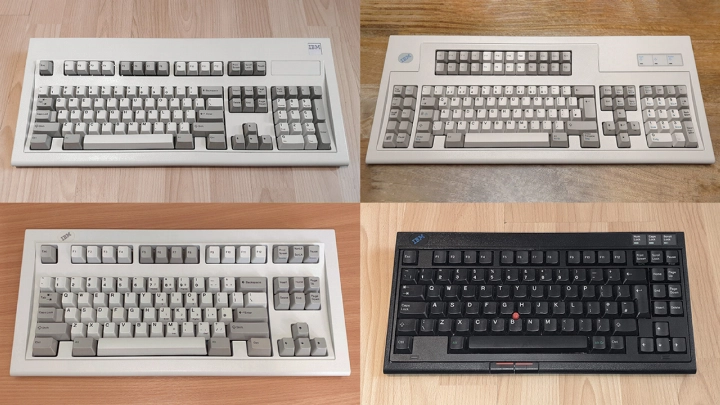
IBM Keyboard M (aka, Model M) was IBM's sixth major keyboard family and is perhaps the most famous, influential, enduring and once most widespread group of keyboards. Essentially a cost-saving evolution of the Model F, the average Model M with clicky membrane buckling springs or tactile buckling sleeves succeeded the Model Fs in all markets whilst retaining good enough reliability and build quality to last several decades. The definitive Model M, the IBM Enhanced Keyboard, is quite possibly the most famous keyboard of all time and is responsible for cementing the dominance of the ANSI and ISO keyboard layouts that we still use today with only minor revision. They spawned far more variants than previous generations, with Model Ms existing for the PC, laptop, workstation, terminal, server, point of sale (POS), typewriter and minor peripheral markets by the mid-1990s. IBM also experimented with integrated pointing devices and even split-keyboard ergonomics with them. Model Ms and their derivatives are still produced by Unicomp and TGCS, both legitimate successor companies to former IBM divisions and spin-offs.
TrackPoint keyboards
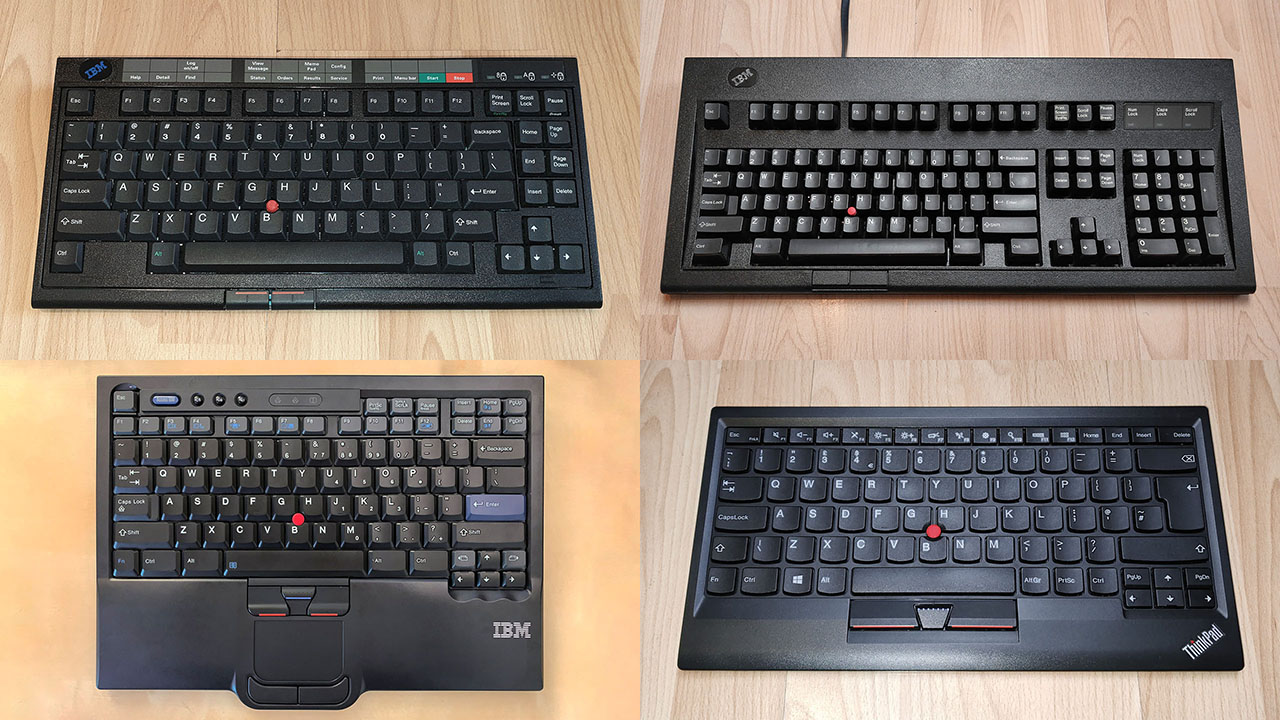
The ThinkPad keyboards started as a variant of the Model M that grew into its own diverse seventh major family of IBM keyboards albeit largely limited to notebook computers. The original Model M6-1 keyboards set a high bar in the quality of portable computer keyboards upon their release, which started a pedigree that has survived to this day. Starting off with buckling rubber sleeve switches, ThinkPad keyboards have since become exclusively scissor-stabilised keyboards produced by a plethora of OEMs and are usually listed amongst the main selling points for IBM and Lenovo ThinkPads. By the 2010s, however, the original Model M6-derived line was replaced by the island/chiclet-style AccuType and Precision Keyboards that whilst having vastly different layouts are still regarded as being amongst the most high-quality laptop keyboards still in production.
The best of IBM
Amongst the seven generations of IBM and family keyboards, there are a select few that stand out above the rest. These 'greatest hits' of IBM and family keyboards are special for being the first of something particular, the genesis behind a particular feature or layout, or otherwise notable enough. There are many keyboards beyond the 15 listed that are special or notable, so consider this a taster for what's to come...
The companies behind them
"IBM and family" is not an official term, but one used quite often here on Admiral Shark's Keyboards. When I use it, I mean to refer to IBM itself, companies that were a former division of IBM, acquired IBM's IP and/or tooling, licensed IBM's IP, or were an ODM/OEM that IBM used but the keyboard itself must be IBM-branded or is based on a design IBM and its primary associates created themselves.
IBM designed most of its legendary keyboards in-house, but IBM has long been a company that spins off parts of itself. Some of these divestitures and sales of parts of their business have resulted in several companies producing products with a lot of former IBM 'DNA' present in some shape or form. IBM also inherited technology from Herman Hollerith and Electromatic, which greatly influenced keyboard-related technology. These key events and dates are:
- 1896 - Herman Hollerith founded the Tabulating Machine Company to market his punched-card related inventions.
- 1911 - Computing-Tabulating-Recording Company (CTR) was founded upon the consolidation of several companies, including the Tabulating Machine Company.
- 1924 - CTR was renamed to the International Business Machines (IBM) Corporation.
- 1933 - IBM acquired Electromatic Typewriters, Inc., giving IBM a head start in realising their typewriter ambitions.
- 1991 - IBM Information Products Corporation was divested to form Lexmark International.
- 1996 - Lexmark exited the keyboard market and its former keyboard manufacturing assets fractured, with some of it becoming Unicomp.
- 2005 - IBM Personal Computing Division was sold to Lenovo Group, creating the modern incarnation of Lenovo.
- 2012 - IBM Retail Store Solutions was sold to Toshiba TEC to form Toshiba Global Commerce Solutions (TGCS).
- 2014 - IBM x86 Server Business was sold to Lenovo Group.
On top of that, for a multitude of reasons, IBM turned to other, entirely separate companies for manufacturing or designs to modify and rebrand. All the companies mentioned below - including 5 core/primary IBM and family companies, our Big 5 if you will - are a part of IBM and family keyboard history and our story.
International Business Machines Corporation was founded as the Computing-Tabulating-Recording Company in 1911, but with origins going back to 1896. For the following century, it played a pivotal role in the development of computing and by extension modern computer keyboards. IBM's achievements are already impressive not considering keyboards, having been credited with inventing or at least played a major role in the development of ATMs, dynamic RAM, electronic keypunches, floppy disks, hard disk drives, the magnetic stripe technology, relational databases, scanning tunnelling microscope and SQL to name a few. IBM of course also kickstarted the x86 personal computer market that persists to this day and designed the instrument unit for the Saturn V rocket that took humanity to the Moon. Today, IBM focuses on artificial intelligence, quantum computing and services. IBM's keyboard pedigree is also impressive, with every generation of their keyboards - from their first keypunch to their last ThinkPad keyboard - making a name for itself in their respective markets and eras and are revered by many.
Lexmark International is an American company that today specialises in printers and imaging technology. It was founded in 1991 via an IBM divesture of its Information Products Corporation, IBM's US-based printer, typewriter and keyboard manufacturing in Lexington, Kentucky and Boulder, Colorado. For the first five years of its operational history, Lexmark and IBM were in an agreement that saw IBM market a vast number of Lexmark products as IBM products, including keyboards. Lexmark was at the helm of the Model M keyboard family during this time and saw the introduction of many new variants including the Models M4 through M15 and fuelled IBM's widespread adoption of buckling sleeve keyswitches. Lexmark was also the primary OEM for IBM's portable computer keyboards such as many early IBM ThinkPads. Lexmark also marketed its own branded keyboards and laptops called Lexmark Lexbooks, both using the IBM-originating keyswitch designs. Lexmark also produced IBM-originating keyboard designs for a plethora of other companies such as AST, Better On-line Solutions (BOS), Dell, GTSI, Lynk, Reply, and Tadpole.
Unicomp GA LLC is an American keyboard manufacturing company based in Lexington, Kentucky and is the sole remaining manufacturer of buckling spring Model M keyboards. It was founded in 1996 by former Lexmark (and by extension, IBM) personnel after Lexmark decided to exit the keyboard business by April of that year due to the shrinking market for high-quality, premium keyboards in the 1990s and IBM's decision not to renew their US-based keyboard production contract with them. Unicomp picked up the pieces of Lexmark's keyboard operations and spent the rest of the 1990s reobtaining some tooling from IBM's other factories before debuting a robust lineup of keyboards by the turn of the millennium. Unicomp quickly found footing in the role of manufacturing keyboards for other companies, mainly in the medical, point of sale, and terminal emulation sectors where high-quality or legacy-designed keyboards would be needed. The companies included Affirmative Computer Products, Bed Bath & Beyond, BOS, Decision Data, General Electric, and I-O Corporation. Unicomp also produced Model Ms for IBM until at least 2007. Despite their priority towards working for other companies, they maintain a consumer-facing presence and would sell its keyboards, parts of keyboards and customised keycaps to anyone.
Lenovo Group is a Chinese company founded originally as Legend in 1984 and grew to dominate the Chinese computer market by the late 1990s. Legend renamed itself Lenovo in 2003 and then bought IBM's Personal Computing Division in 2005, creating the modern Lenovo. They further acquired IBM's x86 Server Business in 2014. Both acquisitions gave Lenovo a considerable amount of former IBM IP, including the ThinkPad family and its laptop, tablet and keyboard designs, which makes them the main spiritual descendent of the original IBM PC. Until 2012, Lenovo continued to produce ThinkPad keyboards to a similar design as their immediate IBM predecessors but then created the AccuType and Precision style of island-key keyboard designs for its laptop and tablet lines. Despite this change, Lenovo continues to be well-regarded for its laptop keyboard designs. Lenovo also inherited a portion of the SK-8835/884x family of UltraNav desktop, server console and sysadmin keyboards and continued to have them produced as late as 2021.
Toshiba Global Commerce Solutions is a subsidiary of Toshiba TEC that is largely comprised of IP from IBM Retail Store Solutions, which IBM sold to Toshiba TEC in 2012. This included the only remnants of the Model M family outside of Unicomp that was still in production by that year. TGCS continues to manufacture IBM-designed and IBM-derived POS terminals, infrastructure and keyboards, the latter including the Retail series (Models M7, M7-1, M8, M9 and M11) and Modular series (67-key, MANPOS and MCANPOS Model M-e) POS keyboard designs that employ IBM buckling rubber sleeve keyswitches. Toshiba quickly discontinued the Retail series around 2015, but Toshiba continues to produce Modular POS series keyboards to this day with a relatively unchanged design.
Third-parties
Besides those 5 main companies, IBM and family keyboard history is full of many partner companies that have worked with the above in some capacity. Generally, such companies fall under two categories of relationship, and you may see keyboards branded or made by them on Admiral Shark's Keyboards.
OEMs
These are companies that have served as an original equipment manufacturer (OEM) for one of the 5 primary companies, having either made components or entire keyboards that are ultimately branded by one of the Big 5.
- ALPS Electric
- Brother Industries
- Cherry
- Chicony
- DongGuan Mae Tay Electronic Co.
- Honeywell/Micro Switch
- Jiangsu Transimage Technology Co.
- Key Tronic
- LITE-ON/Silitek
- Mitsumi Electric
- Maxi-Switch
- NMB
- Primax Electronics
- Sensel
- Siam United Hi Tech
- SMK
- Sunrex Technology
- Synaptics
- XAC
- XSZ
Brands
These are companies that have in fact turned to one of the Big 5 to make their keyboards for them. These relationships exist largely due to the activities of Lexmark (historical) and Unicomp (current), who made a business of producing keyboards for other companies that at times even competed with IBM.
- 10ZiG
- Affirmative Technology Group/Affirmative Computer Products
- Apple
- AST
- Better Online Solutions (BOS/BOScom)
- CompuAdd
- Computer Lab International
- Cube Computer Corporation
- Decision Data
- Dell
- General Electric Healthcare (formerly General Electric Marquette)
- GRiD
- Hyundai Technology
- I-O Corporation
- Marquette (before General Electric's acquisition)
- NEC
- NLynx Technologies
- Praim
- RadiSys
- Samsung
- Tadpole
- Twin Data
- Winbook
About this website

Admiral Shark's Keyboards (ASK) is a passion project to document the keyboards designed and produced for IBM and family; IBM itself, Lexmark, Unicomp, Lenovo and Toshiba Global Commerce Solutions. It's a keyboard database, a keyboard wiki, a hub of well-researched articles, guides and documentation, and a place to showcase my personal collection.
It was created to satisfy my opinion that there was a lack of a centralised resource base for the IBM keyboard enthusiast hobby when I started out in August 2019. Great resources already existed and continue to exist such as the deskthority wiki and personal websites such as kishy's, but I wanted something that could be completed in one place. I consider this website always a 'work in progress' as I try to improve its content and its user experience, but it has already shown its impact and potential in the community as a valuable resource for those needing to look something up or learn more about IBM and family keyboards.
General layout
Admiral Shark's Keyboards is structured in a way to hopefully make using this website an easy, clear and guided experience. As seen on the navigation bar/menu, the main pages of this website are:
- Intro - (here) you meet the core keyboard families, some of their greatest hits, the companies responsible for them, and a bit about this website and myself
- Timeline - get an overview of all the important events in IBM's keyboarding history
- Directory - list of known keyboards and where to find out more about them
- Database - if you need specific per-part number info
- Wiki - where the good, descriptive and properly cited stuff is
- Articles & topics - if you're interested in cutting-edge research, original content, or reference material
The level of detail and complexity generally increases with each page. Thus if you're completely new to the [IBM/vintage] keyboard hobby or IBM keyboards in general, the first pages you can visit will help give you the basic understanding needed for later.
The Keyboard Timeline is an illustrated overview of some of the most important events affecting IBM, Lexmark, Unicomp, Lenovo and Toshiba Global Commerce Solutions keyboards. This includes notable keyboard releases and withdrawals, corporate history like company founding, divestitures and change in OEMs, and patents. This is a great place to start to see the transition from IBM's earliest keyboards to modern keyboards without digging through many of my larger articles and wiki pages.
The Keyboard Directory is an exhaustive list of IBM and family keyboards with a brief description and common (usually Americas (North and South), European, Middle Eastern and African (EMEA), and Japanese) part numbers given and a link on where to find out more. A Yellow Pages for keyboards if you will. Each entry also has a convenient shareable link so you can bookmark a specific keyboard for later reference or share it with someone else.
The Keyboard Part Number Database (or simply Keyboard Database) is the main offering of this website, providing a centralised listing of per part number IBM and family keyboard information. Inspiration came from the IBM part numbers page on the deskthority wiki, but I wanted to deliver a more detailed alternative that could provide a lot more features, such as search engine-like querying, an API for external access, and the ability to develop 'applets' from using the data. And of course, I wanted to deliver more standardised data fields and include Lexmark, Unicomp, Lenovo and Toshiba Global Commerce Solutions part numbers as well. It's useful for:
- Looking for a specific keyboard with the features and language you want.
- Confirming if a keyboard you're about to buy matches known specifications.
- And of course, general research purposes and satisfying curiosity.
Shark's Keyboard Wiki is my personal wiki on IBM and family keyboards, their history, the technology they employ, and the companies themselves. Development of the wiki is still in its infancy, thus the structure and quality of the wiki are subject to change. My current focus is researching and producing keyboard family articles and seldom-discussed keyboards.
Articles are my own opinion, research, or exploration pieces regarding one or more specific keyboards. These can be my findings when researching a particular keyboard, a comparison between two or more devices, digging inside one or more devices, or pretty standard reviews. Topics [of interest] are the pure knowledge bases this website has to offer, from subjects like common questions, jargon-busting, plug and internal connections, notable external sites and pages, and recognised distinct keyboard types!
Recommended resources
Now with all that explained, feel free to have a look around and find stuff you're interested in! Below you can find some more recommended resources that may be useful.
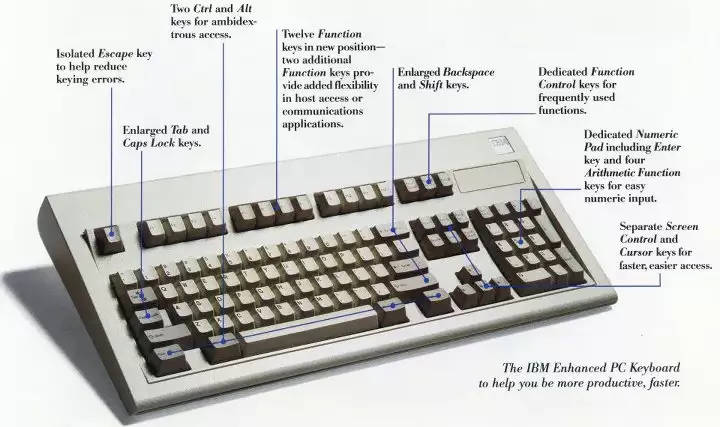
Keyboard Dictionary

TrackPoint, trackpad & UltraNav keyboards
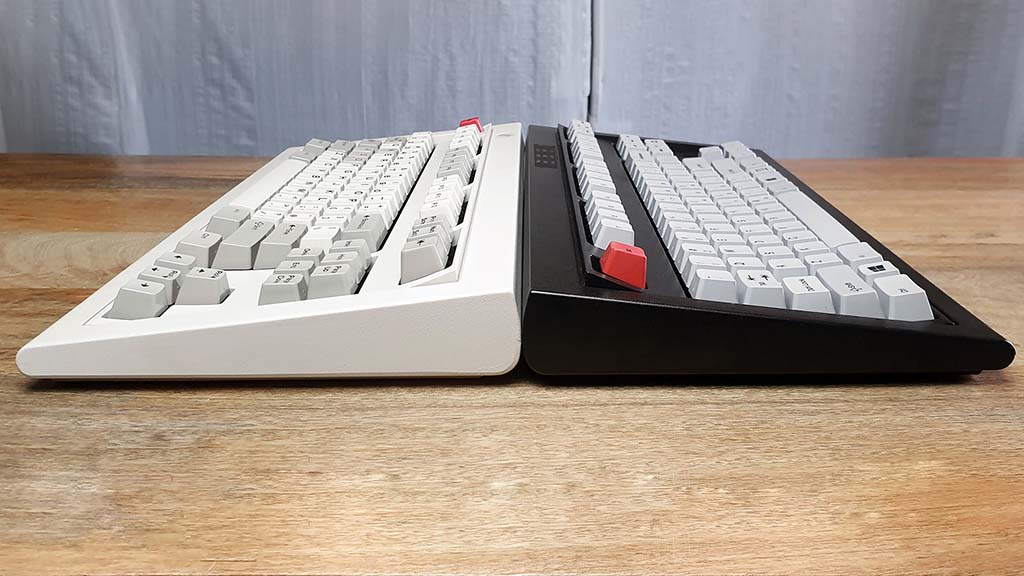
Model F & Model M Buyer's Guide
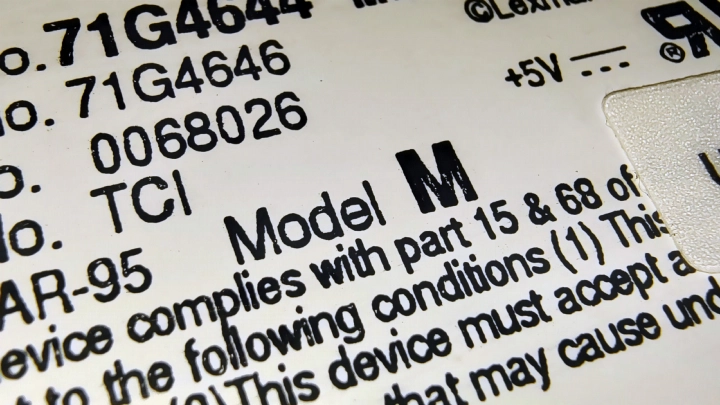
Major IBM typewriter & keyboard models
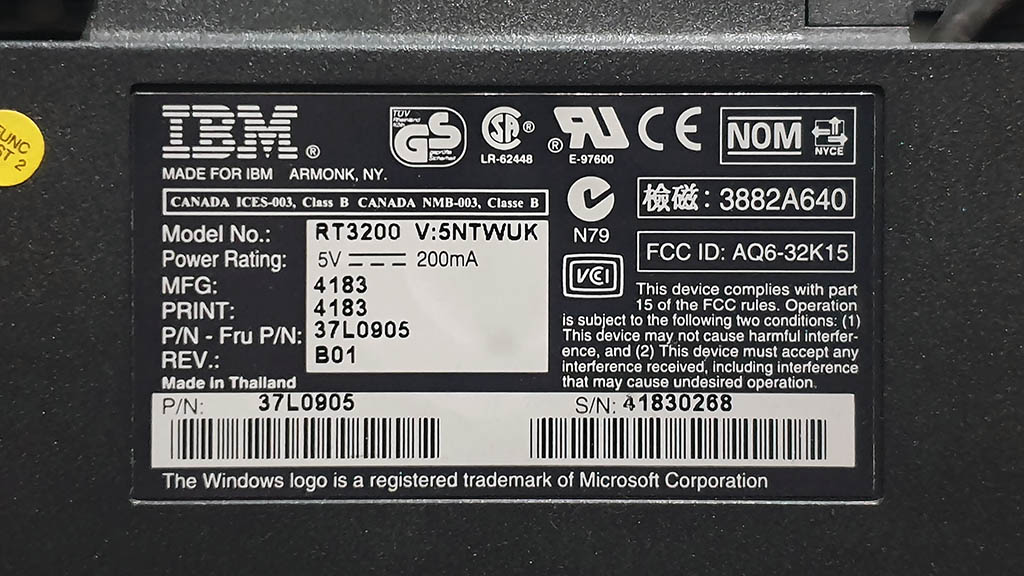
Keyboard Model Numbers & Feature Codes
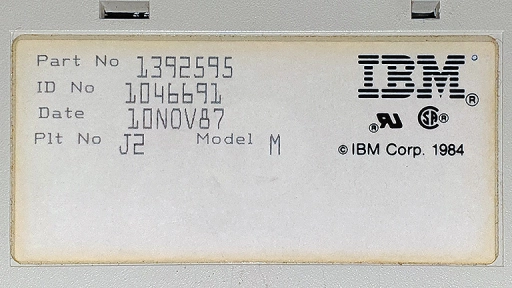
Keyboard Rear Labels
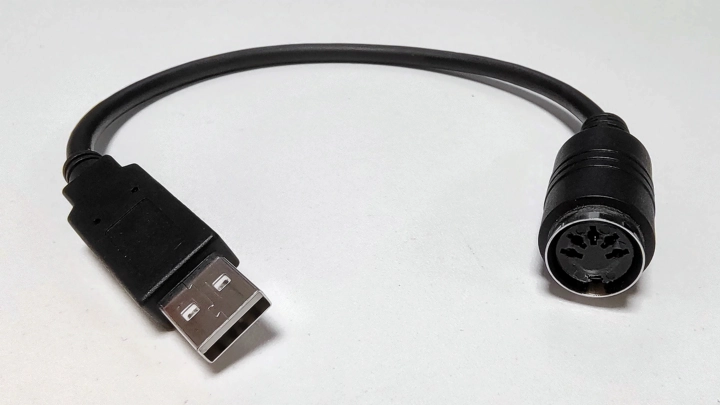
Soarer's Converter 101 Guide

Keyboard Connectivity
Me!
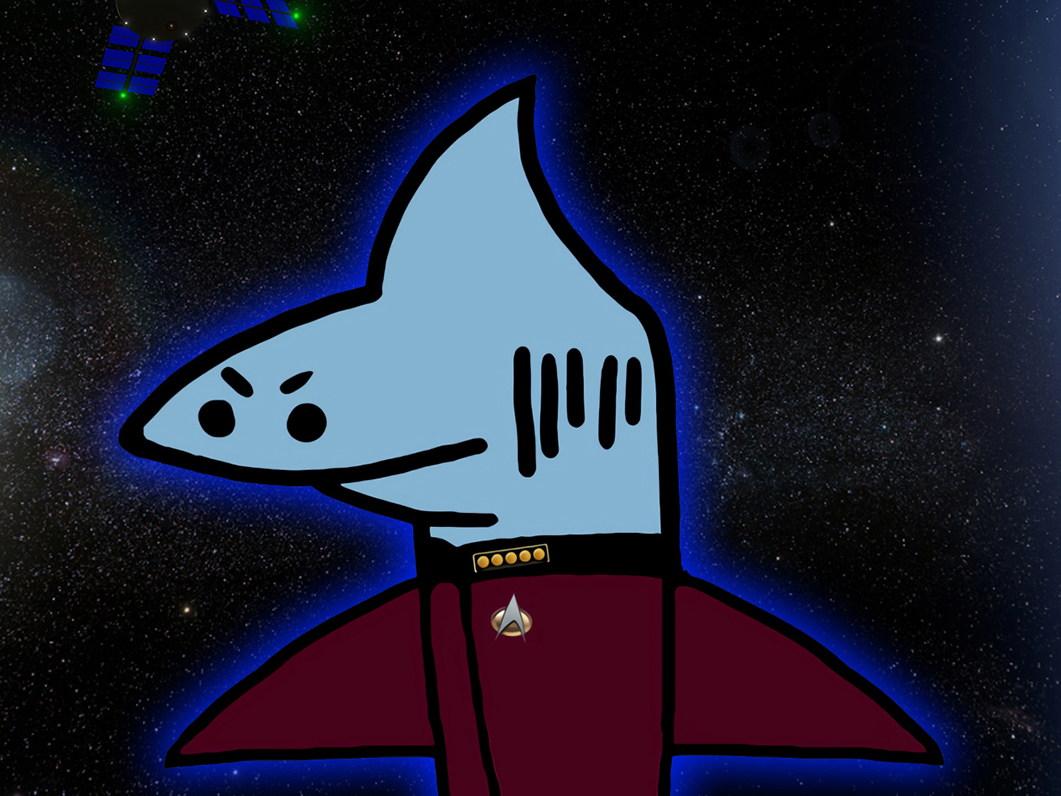
Hi, I'm Kali (he/him)!
Someone in his late 20s from Cymru (Wales), a small but beautiful country inside the United Kingdom where valleys, sheep and several hundred castles dominate the landscape. My interest in IBM was ignited the moment I received my first laptop, an IBM ThinkPad T21, in my early teens. Whilst it certainly wasn't as sleek and elegant as the other kids' PowerBooks and MacBooks, the thing felt indestructible and I was more than happy to lug around an absolute unit of a laptop. Furthermore, in the mid-2010s, a friend from a gaming clan I was in at the time informed me about IBM Model F and Model M keyboards and their merits. In the summer of 2019, I finally became interested enough to pull the trigger on a cheap eBay listing for a Type 2 122-key Model M Converged Keyboard. And, rest is history...
This website is a testament to my love of high quality and interesting keyboards and my dedication to this hobby. I like to think I'm the helpful sort of person, and I'm more than happy to spend time and effort building this site towards being the greatest centralised resource in the hobby. I've also happily taken on the role of moderator of /r/ModelM, and I frequent the forums deskthority and geekhack.
Outside of keyboards, I'm a lover of technology in general (naturally), a huge Star Trek and Stargate fan, interested in naval history, and a listener of heavy and thrash metal. For a living, I work in research/computer science, as a full-stack engineer, and formerly a part-time teacher. In my spare time, I enjoy playing Star Trek Online and Civilization V. My first PC was a Dell OptiPlex GX110 desktop running Windows 98 Second Edition. Besides using a plethora of ThinkPads, I have a custom desktop PC (AMD Ryzen R9 5950X, NVIDIA GeForce RTX 4080, 64GB RAM and Corsair iCUE 5000X RGB Tempered Glass case) and a Lenovo ThinkBook Plus G3 as general daily drivers. My favourite ThinkPad out of the ones I own is the W700. I run Debian on most of my ThinkPads that are at least Pentium 4 era or newer and my custom desktop PC (neofetch), with Cinnamon using Cloweling's CBlack theme as my preferred desktop environment. For even older ThinkPads, I may use TinyCore and/or IceWM instead or run period-correct Windows.
- Ben Franske - File:IBM26.jpg [accessed 2022-02-07]. License/note: GFDL 1.2 or later.
- Oscar.nierstrasz - File:IBM2741.JPG [accessed 2023-01-04]. License/note: CC BY-SA 4.0.
- Martin Skøtt - File:IBM 1130 concole.ms.jpg [accessed 2022-09-04]. License/note: CC BY-SA 2.0.
- IBM - IBM 3215 Console Printer-Keyboard Component Description (#GA24-3550-1) [accessed 2022-09-04].
- H. Stegeman - IBM 5475 Data Entry Keyboard [accessed 2022-09-03]. License/note: used under fair dealing.
- Museo Nazionale della Scienza e della Tecnologia Leonardo da Vinci - File:Interfaccia di acquisizione dati di IBM sistema 3 - Museo scienza tecnologia Milano D0832.jpg [accessed 2022-09-03]. License/note: CC BY-SA 4.0.
- Computer History Archives Project - IBM Computer History: 2770 Data Communications System 1969 Announcement, vintage technology film [accessed 2022-09-03]. License/note: used under fair dealing.
- Glenn's Computer Museum - The IBM System/3 Model 6: The "Real" First IBM Personal Computer [accessed 2022-09-03]. License/note: CC BY-NC-SA 4.0.
- Spitzak - File:IBM 3277 Model 2 terminal.jpg [accessed 2022-02-07]. License/note: CC BY-SA 4.0 (cropped).
- TheMK#1822 - donated photos. License/note: CC-BY-NC-SA 4.0.
- Museo de Informática - R/Evolución 2010 | Equipos expuestos en UTN [accessed 2023-01-19]. License/note: CC BY-SA 3.0.
- WorthPoint - IBM 3727 Operator Console Vintage Computer 1984 KEYBOARD & CRT [accessed 2022-08-13]. License/note: saved from volatile eBay listing via WorthPoint; used under fair dealing.
- M. Wichary - Flickr photo at Museu de la Ciència i de la Tècnica de Catalunya (MNACTEC), 2016 [accessed 2023-03-28]. License/note: CC BY 2.0.
- ComputerGeek7066 - File:IBM 1052.jpg [accessed 2022-09-05]. License/note: CC BY-SA 4.0 (cropped).
- snuci - File:IBM 3277 typewriter keyboard - keyboard top.JPG [accessed 2022-12-07]. License/note: public domain.
- うぃき野郎 - File:IBM System370 model 138.jpg [accessed 2023-12-09]. License/note: CC BY-SA 4.0 (cropped).
- TheMK#1822 - donated photos. License/note: CC BY-NC-SA 4.0.
- webwit - Index of /input/ibm_misc [accessed 2023-01-06]. License/note: public domain.
